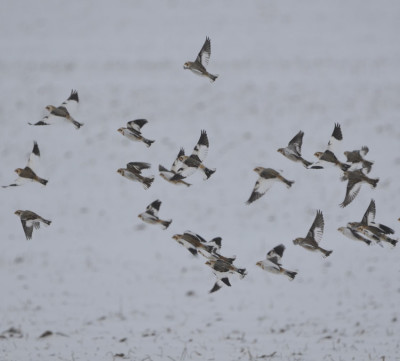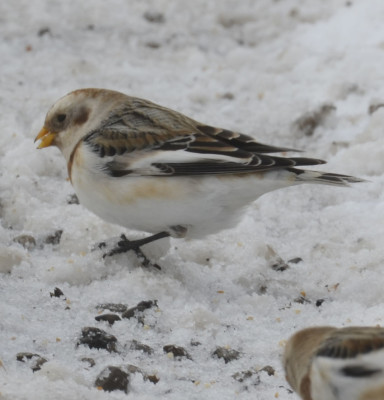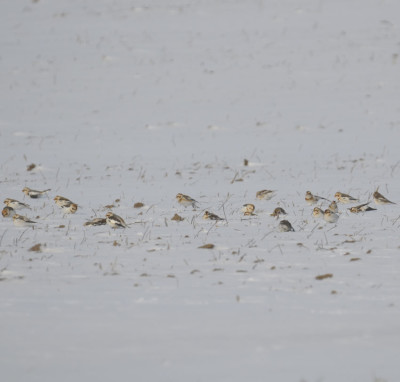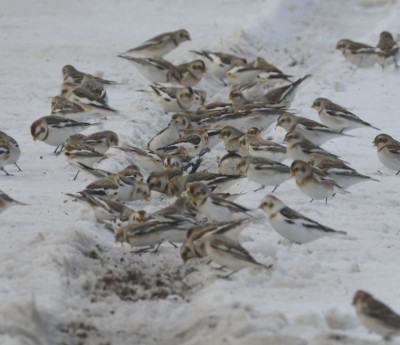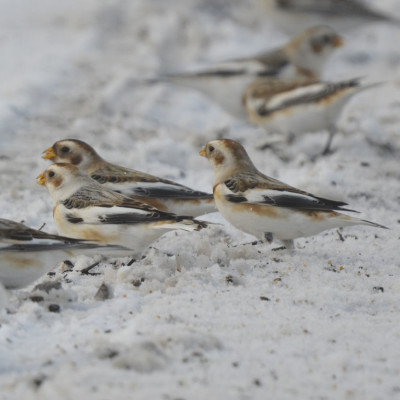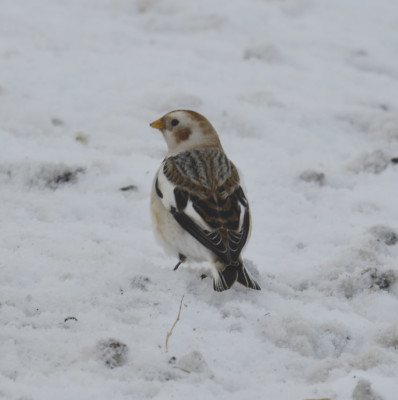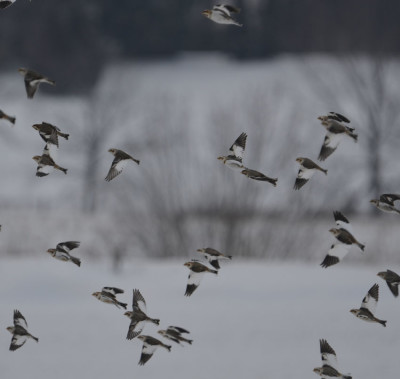The skies have been more silver than blue so far this year but the weather has been reasonably warm so I’ve been out enjoying the chance to explore even if the light isn’t great for my low-skill-level type of photography. In mid-January, I decided to go the extra mile(s) and look at a large flock of Snow Buntings that were enjoying seeds spread by birders and photographers near Dundas Ontario.
Will the Snow Buntings Keep Heading South If the Weather Worsens?
For some reason I had thought Snow Buntings were a bird that migrated from the arctic to the extreme south each year. A review of the facts on the Cornell website proved me wrong. Many Snow Buntings come no further south than southern Ontario to over-winter. So this flock may well stay in the area till March.
What Other Birds Were Keeping the Snow Buntings Company?
When I first arrived, I thought I was looking only at a huge flock of Buntings. Smaller groups would fly to the road edge to eat the offered seeds while others would stay gleaning in the farm fields. If a car, or snow plough, passed the birds would whirl up into the sombre sky before settling again quickly low against the ground.

A Snow Bunting which wouldn’t stay quite still enough.
A closer inspection of the birds at my feet, though, showed not all of them were Snow Buntings. Most obvious were the Horned Larks. A single Lark would often come back to the seeds a good few minutes before the Buntings could nerve themselves up to try again. It would peck and explore quite oblivious to the whirr of camera shutters and quiet chatter of bird watchers. Horned Larks stay year-round in this area so these birds may be used to people; I’m not sure, though, because other Horned Larks migrate through this area as well.
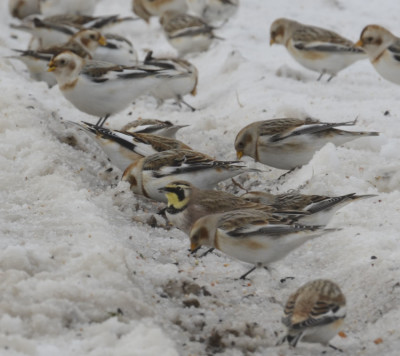
The yellow throat and black face mask of this Horned Lark make it easy to spot.
Several people asked me if I had seen the Lapland Longspurs. I replied, truthfully, that I hadn’t noticed any. Last winter I made a point of searching for Longspurs and found several so this year I was focused on the Snow Buntings instead. Still, when I got home and was looking at my photos on the big screen, I laughed to realize that my second photo had a Longspur in it. I had a few other photos of one as well. Although the bird doesn’t look identical in all of the photos, I don’t have any photo with more than one Longspur in it, so I reported it as a single bird.
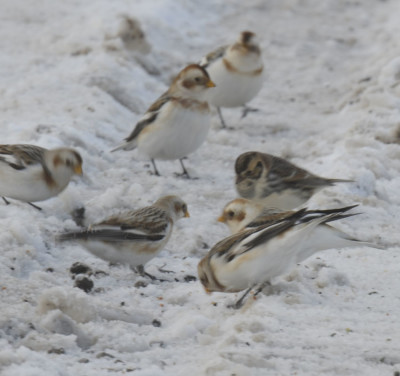
The Lapland Longspur in the middle on the right side is darker than the Buntings with a different looking face but wasn’t immediately obvious when I was out in the field.
Are Snow Buntings Always So Social and So Pushy?
Even though the seeds were spread over a wide area, it often seemed as if each Snow Bunting wanted to land in exactly the same spot to feed. The whole group was constantly moving, chasing each other back a bit, landing almost on top of each other, and pecking under each others toes. The AllAboutBirds website says that even in the Arctic where the males defend territories, these birds still come together in flocks to feed. So I guess this behaviour carries on year-round.
What Kept Worrying the Snow Buntings
This location, near Dyment’s Farm market outside of Dundas, is farmed land with barns and buildings nearby. Spilled seed, intentionally or not, usually means pigeons and that was the case here. Several “Rock Doves” came to feed at the road side at various times. Each time they were in flight, the Snow Buntings would take off.
I don’t know if the large dark shape of the birds made the Snow Buntings nervous about raptors or if they would react to any flying bird the same way. I did notice that even on the ground, the Buntings would move back or fly away if the pigeons got too close. The Horned Larks, on the other hand, didn’t react to the pigeons at all.
Overall, I spent a very happy hour watching this industrious, belligerent group of Buntings foraging and flying around the fields. It may have been grey and gloomy but the birds were bright and boisterous.
Related Reading
- In Search of Lapland Longspurs
- Those Field Sparrows Might be Horned Larks
- A Winter Ramble at Riverwood
Join In
Do Snow Buntings flock up near your farm fields? Please share your sighting with a comment.

